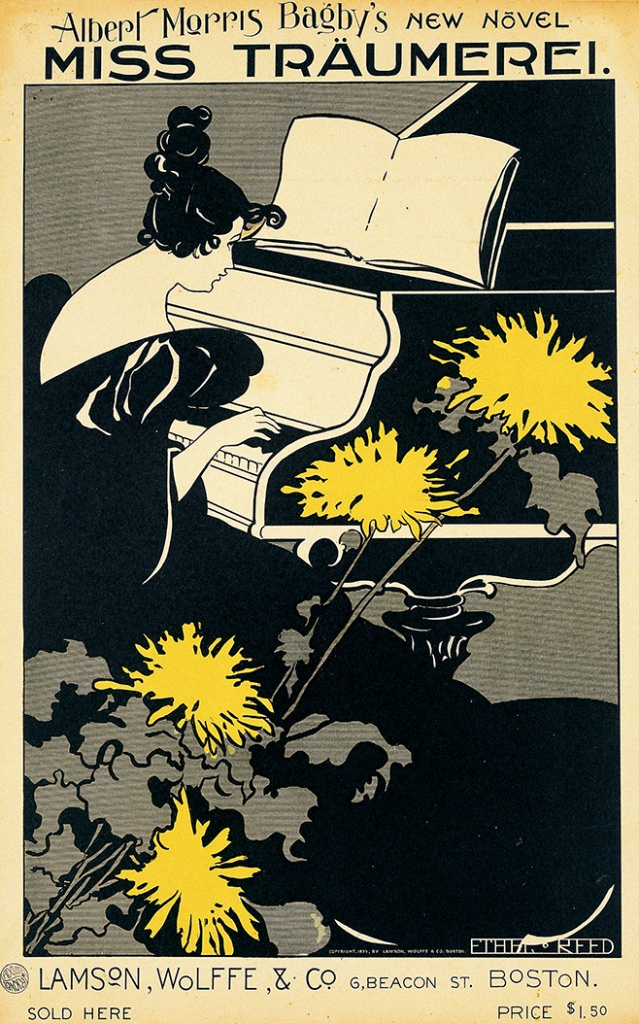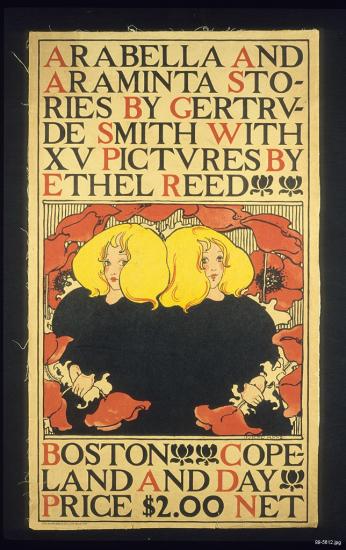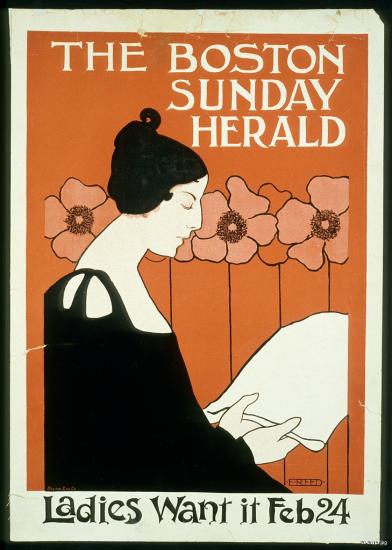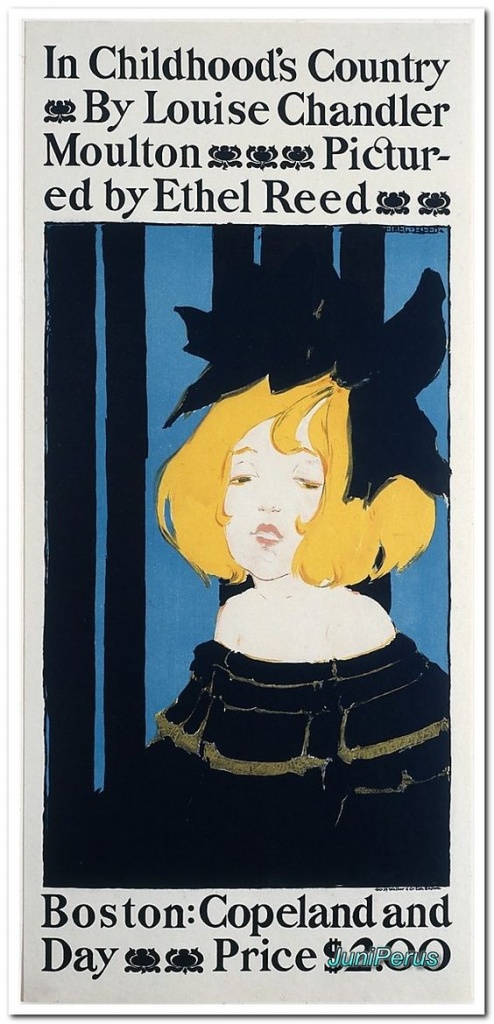Ethel Reed: Ahead of Her Time
The first American woman to achieve prominence as a graphic designer and Art Nouveau, Ethel Reed was a strikingly attractive woman who gained notoriety at the young age of 18 for her creativity as a graphic designer, although she seemingly vanished into thin air at the age of 24 after moving to Europe following a broken engagement. During the brief period she was known for her artistic talents, she was reportedly the brightest shining star in Boston’s artistic community in the late 1800s.
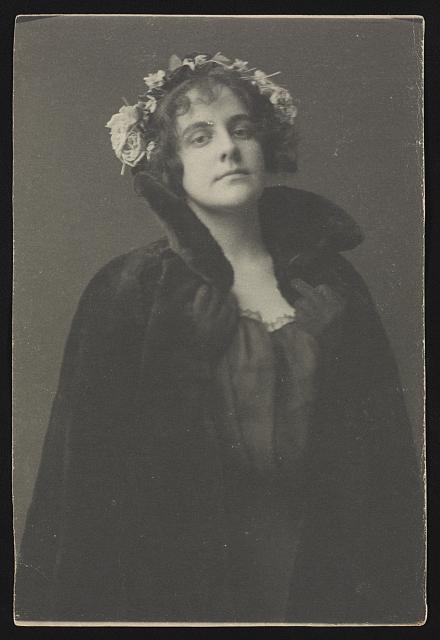
Born in Newburyport, Massachusetts in 1874, Ethel and her mother encountered many struggles following the death of her father, Edward, when Ethel was still a young girl. Self-taught for the most part, Ethel studied for a brief time at the Cowles Art School after moving to Boston with her mother in 1890, where she apprenticed as a painter of miniatures. Before she reached the age of 20, Ethel became the most famous female artist in America, not only for her creativity and reputation as an illustrator in the Art Nouveau style, but her evocative personality as well.
What happened when Ethel disappeared after her failed engagement to Philip Hale? According to the New England Historical Society, Ethel and her mother sailed to Europe on vacation. Up until 1898, Ethel completed a few commissions for The Yellow Book, an avant-garde British publication co-edited by Aubrey Beardsley. After Ethel and her mother headed to Europe, most never knew what had happened to the graphic designer and artist. According to a book written by William Peterson and published just four years ago, Ethel had two children during numerous relationships with her lovers, then tied the knot with Arthur Warwick, an English army officer. Once this marriage crumbled, Ethel allegedly became addicted to alcohol and drugs, and died when she was just in her mid-30s after living her final years in poverty.
One of the most prolific artists and designers of her time despite her young age, Ethel created numerous illustrations, important book posters, and endpapers using a style that was rooted in Art Nouveau, a style characterized by the organic line forms of the late 1800s. In fact, over a two-year time period Ethel Reed produced more than 25 posters which earned her international recognition during the poster craze. Her lively art poster images contributed to the success and popularity of posters that were enthusiastically sought by collectors.
As difficult as it still is today for women to excel in the art and design field, Ethel Reed was a woman far ahead of her time and today has a significant collection of her posters and other work displayed at the Smithsonian American Art Museum. Women’s History Month is a celebration of women’s contributions to culture, history, and society; how tragic that Ethel Reed’s artistic potential was seemingly overtaken by the many demons of her private life.
